Politicon.co
“Great Game” of modernity: Why regional cooperation mechanisms on Afghanistan fail to deliver
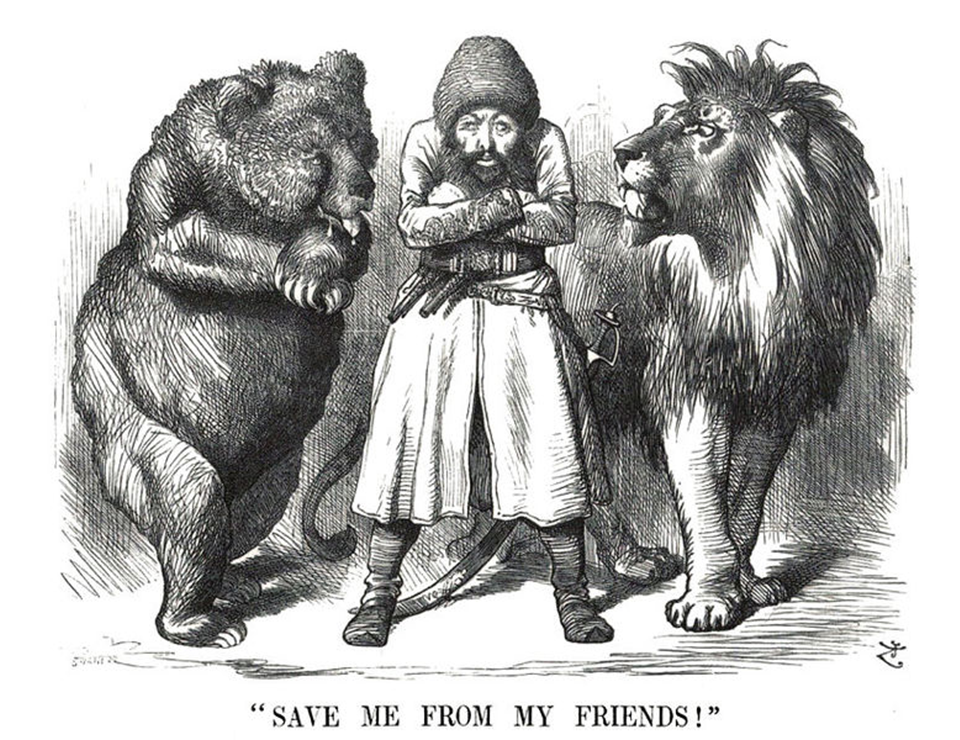
Cooperation platforms such as Istanbul Process, Tokyo Mutual Accountability Framework or International Contact Group on Afghanistan were viewed by international community as mechanisms for complementing military and security-related tasks and contributing to building stability and prosperity in Afghanistan ridden by recurrent violence for decades.
Yet such platforms hitherto failed to produce meaningful outcomes. “Great Game”, a term coined by Rudyard Kiplingin the 19th century to describe scramble for Central Asia among great powers, retained its logic in the modern age and is reflected in the work of regional cooperation frameworks. Since then international system substantially modified, positions occupied by major powers shifted and the number of regional players able to influence the course of events considerably increased, confounding the system of alliances and overall situation in the region. Although common ground for cooperation is present among some powers and to a certain degree, it is still outweighed by the deep divergence of the individual interests of the major players and a resulting net of alignments.
USA
The US involvement in Afghanistan since 2001 turned out to be costly and exhausting.The Obama Administration set the withdrawal of its troops from Iraq and Afghanistan as one of its foreign policy priorities. However, the USA also expects to see the fruits of its prodigal spending in the last 15 years. Afghanistan is crucial for ensuring American interests in the greater Eurasia, yet the USA is not willing to continue spending on it any more. Therefore regional cooperation mechanisms present a good tool for the USA to further its interests in a non-direct manner and at a lesser cost.
In 2011 Hillary Clinton, then Secretary of State, came up with the New Silk Road initiative aimed at connecting Central and South Asian markets with Afghanistan and reinvigorating regional economy (The Diplomat, November 11, 2011). In 2013 China’s chairman Xi Jinping enunciated the Silk Road Economic Belt, a project of greater scope, aimed at tying Asia, via a network of multimodal corridors, to Europe. It was regarded at once as a contender of the New Silk Road project. Although the project was largely considered a challenge to the American interests in the region, in March 2015 US Deputy Secretary of State referring to Silk Road Economic Belt stated: “We don’t see China’s involvement in Central Asia in zero-sum terms. Its development of infrastructure in Central Asia can be fully complementary to our own efforts” (US Department of State, 31 March, 2015) This demonstrates that long-time experience in the region taught USA that unilateral actions with no concessions to other stakeholders require immense resources and bear little fruit. The fact that the USA does not regard China’s Silk Road Economic Belt as a competitor project anymore matches its current vision for the region – to create trans-regional transportation linkages to facilitate trade and forge economic empowerment of the region on the whole. Since the basic rationale of both projects embraces this vision, the USA can afford supporting the initiative put forward by China. Washington’s flexibility also demonstrates its willingness to share responsibility for Afghanistan with its opponents in the region, especially when some important strategic goals of both sides coincide. Cooperation with and certain concessions to China does not substantially threaten the US interests, but may lead to the attainment of its strategic long-term objectives.
China
This cooperation also emboldens China to carry out its own agenda. China’s interests in Afghanistan are largely determined by a necessity to secure its western borders and prevent the province of Xinjiang from becoming a safe heaven for Islamic extremists. Beijing searches for ways to eventually root out Eastern Turkestan Islamic movement that has connections to Taliban. Stability in Xinjiang also fits into economic structure and development vision of Beijing. As markets in the traditionally superior coastal part of China become more saturated and labor costs grow, more significance is placed on its inner and Western regions. Shift of manufacturers further inland with the abundance of cheap labor is an unavoidable process if China is to maintain its economic boost. It will also contribute to tackling the problem of internal migration. Besides this, the China-Kazakhstan oil and China-Turkmenistan gas pipelines pass through the Xinjiang province, attaching greater strategic importance to this region and making it even more expedient to take actions aimed at strengthening its security. Thus a stable and secure Afghanistan is important for maintaining China’s own security and creating auspicious conditions for expanding its economic geography.
China also became distinctly proactive in regional affairs through greater engagement in the regional cooperation mechanisms such as CICA (Conference on Interaction and Confidence Building Measures in Asia) and Istanbul Process. In May 2014 it hosted the CICA Summit in Shanghai and currently holds the position of chair of this organization. China also hosted a ministerial conference on Istanbul Process in October 2014 in Beijing. In addition, alongside with Russia it spearheads the Shanghai Cooperation Organization. Lately China began to widely promote its New Asian Security Concept based on the principles of common, comprehensive, cooperative and sustainable security. This concept reflects the vision of China towards the security matters in the region and underlines its readiness and capacity to be a leading party in designing regional security cooperation architecture.
China also noticeably broadened its bilateral relations and cooperation with Pakistan, a quintessential country for solving the situation in Afghanistan. The greatest enterprise among them is the China-Pakistan economic corridor megaproject, the cost of which is estimated at 46 billion USD (Al Jazeera, 4 May, 2015). It is aimed at connecting Gwadar Port in southwestern Pakistan to Xinjiang province through a network of railroads, highways and pipelines, providing China with an access to the Indian Ocean and further expanding its economic influence.
Russia
Goals of Russia in Afghanistan and the regional cooperation frameworkson it are manifold and sometimes contradicting each other. Firstly, given its current focuson Syria and economic woes at home Moscow cannot afford devoting its resources to Afghanistan. With the collapse of the Soviet Union, Russia lost its premium physical access to Afghanistan, but aims to maintain its historic strategic grasp in the region and exert control on Afghanistan through the former Soviet Republics of Central Asia. Yet not all of them are Russia’s tractable allies. It takes more sophistication to deal with countries like Uzbekistan and Turkmenistan, the former growing more and more unyielding towards Russia and the latter pursuing neutrality as its official foreign policy course.
Russia purports to strengthen the position of regional security institutions of which it is a leading member and hence to has greater say on regional issues, such as CSTO and Shanghai Cooperation Organization. Its strategic aim is to ensure that these institutions have more leverage in designing Eurasian regional security environment. Russia also plans to broaden the geography of Customs Union and Eurasian Economic Union and enable its broader engagement in regional economic affairs. This holds particular significance for Russia in the light of its strained relations with the West and turn around to Eurasia. Therefore Russia is suspicious about the progress of the regional initiatives, in which other players have an advantage of putting forth their own agenda. Implementation of the projects such as New Silk Road and Silk Road Economic Belt are notin Russia’s best interest, as they seek to create alternative infrastructure and facilitate shipments of goods via routes circumventing Russia. The success of these initiatives would empower Central Asian countries along the new transportation routes, turning them into transit countries and thereby loosening Moscow’s grapple on them.
Yet Russia has a record of openly supporting some projects initiated by other stakeholders, not corresponding to its strategic goals in the region. For instance, in 2011 president Vladimir Putin, then prime-minister of Russia, voiced support to and pledged to contribute 500 million USD for the realization of the CASA-1000 project aimed at providing electricity connection between Kyrgyzstan, Tajikistan and Pakistan via Afghanistan (Eco-Business, November 9, 2011). Conventional logic suggests that successful implementation of this initiative is not in Moscow’s best interest, for it will lessen energy dependence of these post-Soviet countries on Russia. A willingness to render financial support to this sort of projects might be explained by the utmost interest of Russia not to be excluded from regional projects of high importance and desire to exercise greater control over them.
Moscow’s goal of fostering Sino-Russian cooperation should be viewed through the lens of its strenuous relations with the West and necessity to take part in the regional projects led by China. Russia needs to offset the influence of China in Central Asia in order to preserve its strong position in the region, yet it lacks economic leverages to achieve this goal. China has much to offer and exponentially expands cooperation with Central Asia via a number of economic projects, thereby winning more influence among these countries and easing Moscow’s hold on them. On May 8, 2015 Russia and China signed a joint declaration “On cooperation in coordinating the development of the Eurasian Economic Union (EEU) project and the Silk Road Economic Belt (SREB)” with a goal of combining these two projects (Carnegie, June 5, 2015). This demonstrates that Russia has no choice but to concede to the Chinese influence in the region, while striving to remain a part of China-led initiatives.
On the other hand, Russia needs to counter trafficking of narcotics and above all, spread of terrorism and extremism emanating from Afghanistan and Central Asia, threatening to transcend borders and cause serious headache to Russia on its own soil. Russian dilemma consists of the necessity to have a stable and secure Afghanistan in order to avert the diffusion of these menaces, while being reluctant to spend on maintenance of this security. Thus it paradoxically needs greater involvement of other powers capable of upholding peace and stability in the region, so that Russia can pursue its agenda in a safe environment, while at the same time it seeks to offset the influence of these very powers.
Pakistan and India
Policies of Pakistan and India towards Afghanistan stem from the nature of relations between them. Strategic interests of Pakistan are of great importance for defining the fate of Afghanistan. Conventional thought holds that the key to stability in Afghanistan lies elsewhere but in Islamabad. Porous and largely unmonitored border called the Durant line creates favorable conditions for infiltrations and regrouping of extremist fighters from both sides. Pakistan desires to retain its exclusive leverage over Afghanistan and fill the security vacuum after the withdrawal of the NATO-led forces, similar to what happened after the pullback of Soviet troops and the subsequent American retreat from the region more than two decades ago.
Another widely articulated notion is that Pakistan allegedly supports Taliban fighters and encourages the division of the Afghan society along the ethnic lines (The Washington Post, October 8, 2015). Such rhetoric is also frequently pronounced on official level. Since the beginning of 2015the leadership of Afghanistan has repeatedly accused Pakistan of giving support to Taliban (Al Jazeera, October 10, 2015). One must also consider the factor of discrepancy within the power structure of Pakistan, when the views and official rhetoric of civilian leadership do not coincide with the actions of military leadership (The Diplomat, November 24, 2015). The importance of Pakistan in the Afghan affairs is further supported by the fact that Pakistan is one of the only countries alongside with Saudi Arabia capable of brokering negotiations between Taliban and the government in Kabul.
Since Pakistan’s goal is to maintain its discretion to unilaterally influence the course of events in Afghanistan, enhancement of the India-Afghanistan relations does not serve this end. Pakistan is utterly against the promotion of the image of friendly India in Afghanistan and considers an improvement of relations between the two states dreadful for itself. Pakistan apprehends that India will increase its economic influence over Afghanistan and strives to prevent this from happening. For instance, itdoes not give any transit rights to India to access the Afghanistan market for its exports.
Stable and prosperous Afghanistan is in India’s best interest. The prime objective of India is to mitigate the threat of terrorism and extremism coming from Afghanistan and Pakistan. India keeps on investing in Afghanistan despite high risks associated with security. Ittakes an active part in economic and trade initiatives within the formats of regional cooperation. India also signed a preferential trade agreement with Afghanistan and lifted tariffs on imported Afghan goods.
Strategic postures of India and Pakistan on the issue of Afghanistan align the former with Iran and the latter with China on one side and Saudi Arabia, on the other. Cooperation between Iran and India became particularly noteworthy due to heightened interest and financial contributions by the latter to the Chabahar port project in Iran, which will facilitate faster shipment of goods from India to Iran bypassing Pakistan (The Hindu, August 27, 2015). This is an essential project for India taken into view that Pakistan does not allow India to use its territory for economic purposes and thus prevents its economic expansion in the region. This project is also widely seen as aimed to balance the China-Pakistan economic corridor project. Iran-India, China-Pakistan and Pakistan-Saudi Arabia alignments and cooperation on large-scale projects demonstrate that the deep divergence of interests between Pakistan and India necessitates them to seek favorable partners and pursue certain projects with a view to attain their objectives.
Iran
Iran is an important player in regional affairs with a capacity to exert influence over Afghanistan, particularly in the Western province of Herat. Linguistic affinity, belongingness of 20 percent of Afghanistan’s population to the Shia branch of Islam and around 3 million Afghan refugees residing in Iran are among the important cards Iran may activate. The nuclear deal and lifting of sanctions on Iran will further contribute to its more assertive policy on Afghanistan and the region.
An ever increasing number of sources claim that Iran provides material and arm support to Taliban, its implacable foe, in order to curb the spread of ISIS, which Tehran resolutely denies (Foreign Affairs, June 21, 2015). Such possibility of unfolding of the situation must be considered in the context of broader animosity between Iran and Saudi Arabia. It may further escalate the situation and threaten to turn Afghanistan into new theater of Shiite-Sunni sectarian violence, similar to what is observed in the Middle East.
Afghanistan faces a serious dilemma, as it aimsto deepen cooperation with Iran, in particular for economic reasons, while at the same time retain close relations with the Saudis, who have considerable influence over Taliban and may bring it to the table of negotiations. Saudi Arabia in return expects Afghanistan to join broad Sunni coalition, which undoubtedly will cause a backlash by Iran. Thus the government of Afghanistan must be vigilant and balanced in its dealings with both, as overt inclination towards one of them may trigger external support to sectarianism and deteriorate already fragile security environment in the country.
Conclusion
This imbroglio of divergent interests and strategic goals of global and regional powers, projects advocated by them and their alignments with other like-minded stakeholdersleads to the degradation of the state of security in Afghanistan and dumps the prospects for its stability and prosperity. It also makes regional cooperation platforms created with a view to contribute to reinvigoration of Afghanistan superfluous and inefficient. The increased focus of international community on the Middle East and problems emanating there with diverts attention away from Afghanistan. The situation is further strained due to the ongoing Iran-Saudi Arabia enmity, resurgence of Taliban, activation of ISIS and potential external support to these radical groups. The likelihood of these militant groups to fill the security gap and challenge the authority of the central government is extremely high. The decrease in the number of NATO-led troops has already entailed a vacuum in the country’s security environment and put its security institutions to a serious test. A complete withdrawal of the coalition forces will only deteriorate the situation, setting a propitious ground for a wider resurgence of radicalism and militancy, damping the positive results achieved during the last decade. Hence higher attention of the international community and, foremost, greater coordination of projects and crafting of a unified approach among the global and regional players on Afghanistan is quintessential as never before for preventing the country from re-embarking onto the path to violence and instability.
References
1. The New Silk Road? The Diplomat, November 11, 2011;
http://thediplomat.com/2011/11/the-new-silk-road/
2. An Enduring Vision for Central Asia, US Department of State, March 31, 2015;
http://www.state.gov/s/d/2015/240013.htm
3. The China-Pakistan economic corridor, Al Jazeera, 4 May, 2015;
http://www.aljazeera.com/programmes/countingthecost/2015/05/china-pakistan-economic-corridor-150502073929994.html
4. Russia to help finance Asian power line, Eco-Business, November 9, 2011;
http://www.eco-business.com/news/russia-to-help-finance-asian-power-line/
5. Eurasian Silk Road Union: towards a Russia-China consensus? Carnegie Moscow Center, June 5, 2015;
http://carnegie.ru/2015/06/05/eurasian-silk-road-union-towards-russia-china-consensus/i9kt
6. The key to solving the puzzle of Afghanistan is Pakistan, The Washington Post, October 8, 2015
https://www.washingtonpost.com/opinions/the-key-to-solving-the-puzzle-of-afghanistan/2015/10/08/1ebfa63a-6df1-11e5-aa5b-f78a98956699_story.html
7. Afghanistan's Ghani: Pakistan Needs to Do Something About the Taliban, The Diplomat, August 10, 2015;
http://thediplomat.com/2015/08/afghanistans-ghani-pakistan-needs-to-do-something-about-the-taliban/
8. Abdullah: Taliban are receiving support within Pakistan, Al Jazeera, October 10, 2015;
http://www.aljazeera.com/programmes/talktojazeera/2015/10/abdullah-taliban-receiving-support-pakistan-151009125418555.html
9. Decks cleared for India’s role in Iranian port, the Hindu, August 27, 2015;
http://www.thehindu.com/news/national/decks-cleared-for-indias-role-in-irans-chabahar-port/article7583968.ece
10. The Enemy of Iran's Enemy in Afghanistan, Foreign Affairs, June 21, 2015;
https://www.foreignaffairs.com/articles/afghanistan/2015-06-21/enemy-irans-enemy-afghanistan
11. A turning point in Afghanistan-India relations?, The Diplomat, November 24, 2015;
http://thediplomat.com/2015/11/why-afghanistan-and-india-are-about-to-transform-their-relationship/
![]()
- TAGS :
- Afganistan
- Russia
- USA
- Pakistan
- İndia
- Central Asia
- TOPICS :
- Foreign policy
- Geopolitics
- REGIONS :
- Middle East and North Africa


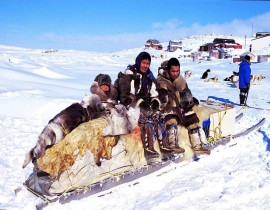
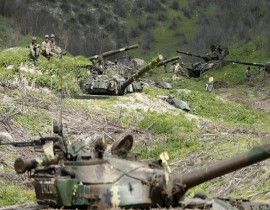

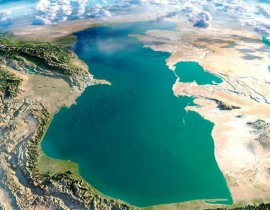
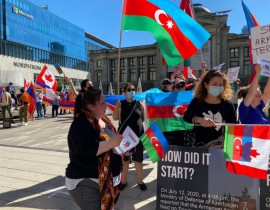
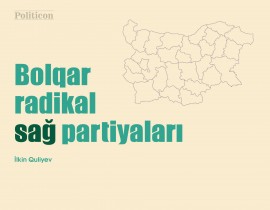
jpg-1599133320.jpg)

